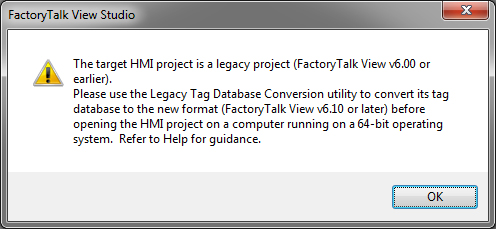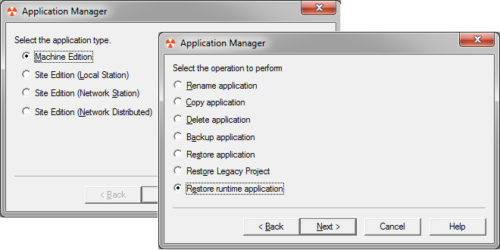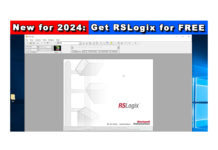
This is a question I get asked quite a bit.
And that’s probably because it’s not the easiest question to answer.
Option 1: The Application Archive
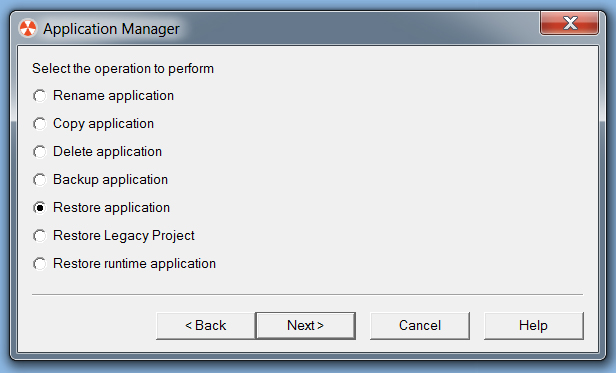 Preferably, everyone who has to maintain a PanelView Plus would have a backup copy of the application file, better known as the application archive or .apa file.
Preferably, everyone who has to maintain a PanelView Plus would have a backup copy of the application file, better known as the application archive or .apa file.
If you have this file, most of the time you’ll be able to extract it back to a project using the Application Manager.
However, there are a few things that could stop this from working successfully.
First, if your View Studio ME software is older than the version used to create the APA, well then you’re not going to be able to open and edit that project.
In that case your best option is to get software at least as new as version used to create the .APA.
The second problem you may run into is when you try to open an old pre-6.1 project created on a Windows 32bit OS on a new Windows 64 bit OS.
Unfortunately, the old project database can’t be exported on a 64 bit OS, so if you’re in this situation you’ll want to read my previous articles on this subject:
- https://theautomationblog.com/easy-way-to-migrate-factorytalk-view-projects-to-windows-7-64-bit/
- https://theautomationblog.com/how-to-migrate-factorytalk-view-projects-to-windows-7-64-bit/
Option 2: Runtime Files
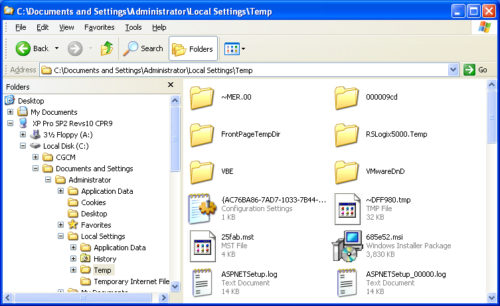 Simply put, not all runtime files can be restored into a project.
Simply put, not all runtime files can be restored into a project.
Old runtimes files that are pre-version 5.0 just don’t have all the project components saved in the .MER file.
In other words, while there is a way to recover tags and graphics, as I discuss in this article there is no way to recover Alarms, Parameters, Macros, and the RSLinx Enterprise communications setting from these legacy .MER files.
However, if you are fortunate enough to have a .MER file created with version 5.0 or greater, there is a chance you can restore the application from the .MER file using the Application Manager.
The determining factor is whether the person who created the .MER file (1) allowed conversion, and (2) passworded the file.
If the .MER was created without allowing conversion, there’s no way to recover the project from the .MER file.
If the .MER file requires a password, you must have that password in order to recover the project from the .MER file.
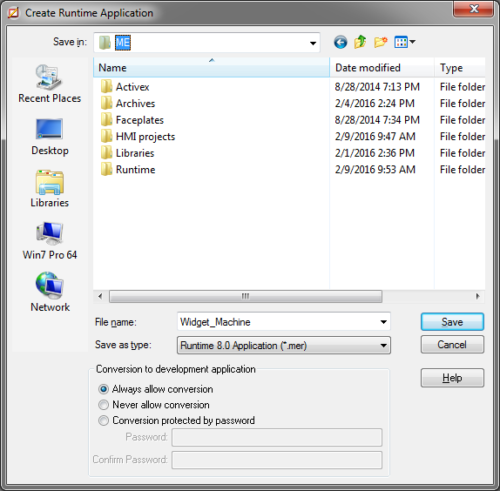 NOTE: Some versions would default to passworded but with a blank password, so if you run into a .MER password issue you may want to try using a blank password.
NOTE: Some versions would default to passworded but with a blank password, so if you run into a .MER password issue you may want to try using a blank password.
On top of those considerations, you’ll also have the same 32 bit / 64 bit OS issue with .MER files that I mentioned above with .APA files.
So if your .MER file was created in a pre-6.1 version of View Studio on a 32 bit Windows OS, you’ll need to first use the Application Manager to recover the .MER file on a 32 bit Windows OS before following the 32 bit to 64 bit conversion process I discuss in the articles I link to above.
Questions?
I hope you’ve found today’s article helpful.
If you have any questions about what I’ve written please don’t hesitate to post them using the “post a comment or question” link below.
Until next time, Peace ✌️
If you enjoyed this content, please give it a Like, and consider Sharing a link to it as that is the best way for us to grow our audience, which in turn allows us to produce more content 🙂
Shawn M Tierney
Technology Enthusiast & Content Creator
Support our work and gain access to hundreds members only articles and videos by becoming a member at The Automation Blog or on YouTube. You’ll also find all of my affordable PLC, HMI, and SCADA courses at TheAutomationSchool.com.
- FactoryTalk Design Workbench First Look, CCW Comparison - December 19, 2025
- Drew Allen of Grace Technologies on Automation, Safety, and More (P256) - December 17, 2025
- Robotics in Warehouse Automation with Erik Nieves of Plus One Robotics (P255) - December 10, 2025

Discover more from The Automation Blog
Subscribe to get the latest posts sent to your email.



